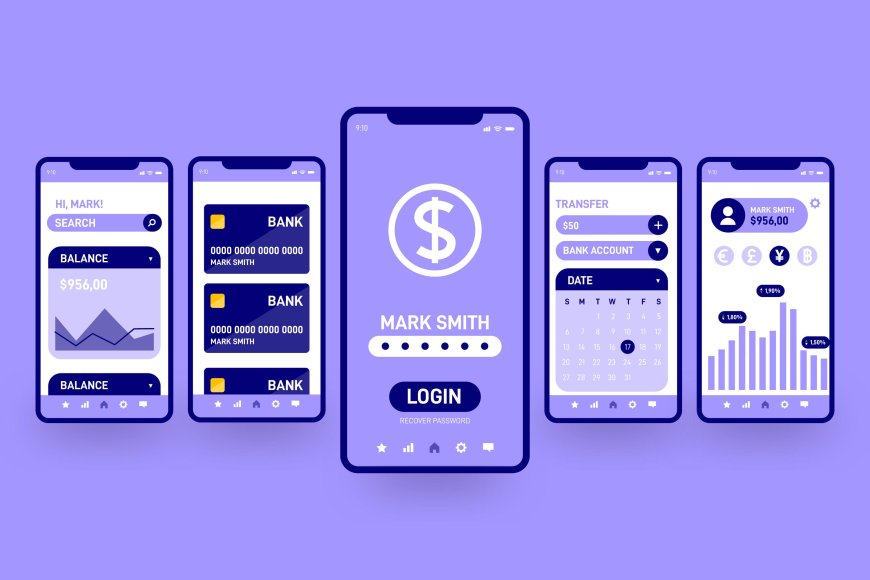Best Budgeting Apps 2025 for Small Business Owners
Discover the best budgeting apps 2025 for small business owners. Compare pricing and pick the right business finance tracking app

Best Budgeting Apps for Small Business Owners in 2025
Running a lean company in 2025 means staying on top of cash flow, forecasting, and day‑to‑day costs. This guide reviews the best budgeting apps 2025 for founders and teams who need clarity without extra admin. Below you’ll find practical picks, a comparison table, and tips for choosing a budgeting app for small business that fits your size, industry, and workflow.
Quick tip: Start with a simple monthly budget, then add categories and automations once the team adopts the tool.
Why budgeting apps for small business matter in 2025
Modern tools automate data capture, reconcile accounts, and give real‑time visibility into spending. A dedicated business finance tracking app also standardizes how you approve purchases, set limits, and prepare reports for taxes and investors.
Key outcomes you can expect
- Faster month‑end close and cleaner books
- Real‑time alerts for unusual spend
- Forecasts you can share with stakeholders
- Less manual entry thanks to bank feeds and receipt scanning
How to choose the best budgeting apps 2025 for your use case
Match features to your stage and complexity. Freelance‑style accounting is not enough once you hire or start invoicing across currencies.
Evaluation checklist
- Integrations with your bank, payment processor, and payroll
- Role‑based approvals and spend limits
- Forecasting and cash runway views
- Mobile receipt capture and mileage
- Multi‑currency and tax support
Comparison table: budgeting apps for small business
| App Name | Price | Pros | Cons | Best For |
|---|---|---|---|---|
| QuickBooks Online | From $30/mo | Ubiquitous, strong reporting, many integrations | Learning curve; add‑ons increase cost | SMBs needing full accounting + budgets |
| Xero | From $29/mo | Great for multi‑currency, clean UI, robust ecosystem | Some reports need customization | Product‑led teams and agencies |
| Zoho Books | From $20/mo | Affordable, inventory + projects, workflow rules | Fewer third‑party apps than QBO/Xero | Budget‑minded small firms |
| Wave | Free core; paid payments/payroll | Free invoicing + basic accounting | Limited advanced features | Solo founders and startups |
| FreshBooks | From $19/mo | Invoicing + time tracking, easy to use | Budgeting is lighter than accounting suites | Service businesses and freelancers |
| Sage Accounting | From $10/mo | Solid ledgers, compliance features | UI feels dated to some users | Traditional small businesses |
Best use cases for a business finance tracking app
Choose based on the workflow you run most often.
Invoicing‑first businesses
If you invoice clients every week, FreshBooks or Zoho Books keep income and expenses tied to projects. Automations send reminders and add late fees, while reports map cash in vs. out.
Inventory‑aware retailers or wholesalers
Xero or Zoho Books handle items, SKUs, and multi‑warehouse basics. Pair with a spend control add‑on to cap team purchases and keep budgets accurate.
Founder‑led finance with light budgets
Wave is a great entry point. Add a spreadsheet‑based budget or use an affordable planning add‑on until you outgrow it.
Pro move: Create category budgets that mirror your P&L lines (COGS, Marketing, Ops) so you can drill down from the budget to actuals.
Implementation plan: from zero to budget hero
- Connect bank feeds and payment processors.
- Import last 12 months of transactions to seed your baseline.
- Define budget categories and owners.
- Set monthly and quarterly targets with thresholds.
- Turn on alerts for overspend and unusual vendors.
- Review actuals weekly; update forecasts monthly.
Popular budgeting frameworks for SMBs
Pick a budgeting model that matches your operating style, then stick with it for at least one quarter to see results.
Zero‑based budgeting
Every dollar is assigned a job at the start of the month. Great for lean teams that want tight control and clear trade‑offs.
50/30/20 with business flavor
Allocate roughly 50% to operating essentials, 30% to growth and optional spend, 20% to reserves and profit. Adjust bands based on seasonality.
Envelope method by department
Create envelopes for Marketing, Operations, Tools, and Travel. Owners request top‑ups with justification, improving accountability.
Security, compliance, and data retention
Budgeting apps handle sensitive financial data. Verify controls before rollout, especially if you serve regulated industries.
- Access control: role‑based permissions and SSO (SAML/OAuth)
- Audit trails: immutable logs for approvals and edits
- Data residency: clarify where records and backups are stored
- Exports: CSV and API access to avoid vendor lock‑in
Common mistakes and how to avoid them
- Too many categories: Start broad, then split once owners consistently review.
- No owners: Assign one person per envelope to approve and report exceptions.
- Skipping reviews: Put a 15‑minute weekly budget stand‑up on the calendar.
- Ignoring cash runway: Always keep 3–6 months of fixed costs visible.
Budget KPIs to track
- Operating expense variance (plan vs. actual)
- Cash runway in months
- Customer acquisition cost payback
- Gross margin trend
- Vendor concentration (top 10% of spend)
FAQs about the best budgeting apps 2025
Do I need a full accounting suite?
If you raise invoices, track taxes, or manage payroll, a full suite like QuickBooks Online or Xero pays off quickly. If you’re pre‑revenue or very early, Wave or FreshBooks may be enough.
Can I migrate data later?
Yes. Most tools export CSVs and support onboarding from competitors. Test migration with a sample company before you switch.
How do I handle multi‑currency budgets?
Use tools with native multi‑currency and lock a monthly FX rate for planning. Report both base currency and functional currency to avoid confusion.
What’s the best way to budget irregular revenue?
Base fixed costs on a conservative trailing average. Create a “buffer” envelope to absorb lean months without cutting essentials.
Should I integrate corporate cards?
Yes, if the app supports real‑time controls. Set per‑card limits by envelope and require receipt upload within 48 hours.
Conclusion: pick the budgeting apps for small business that fit your stage
The best budgeting apps 2025 help you stay cash‑positive, reduce busywork, and make smarter decisions. Start small, automate receipts, and review your budget every week. Ready to try? Download a business finance tracking app above and test it with your next month of expenses.
What's Your Reaction?
 Like
0
Like
0
 Dislike
0
Dislike
0
 Love
0
Love
0
 Funny
0
Funny
0
 Angry
0
Angry
0
 Sad
0
Sad
0
 Wow
0
Wow
0
































































